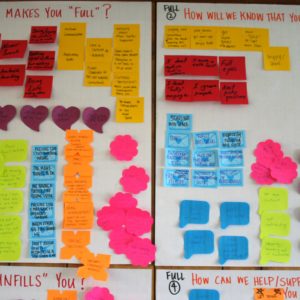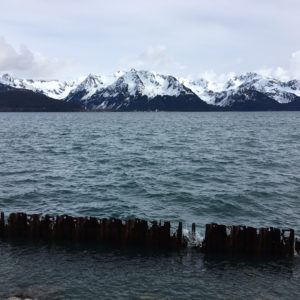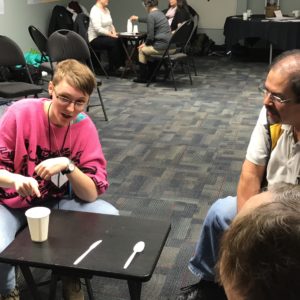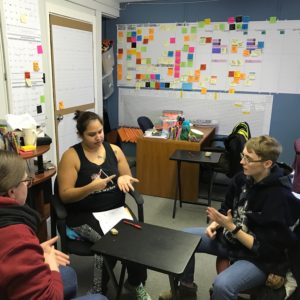Here’s Robbie Penman’s update from the spring of 2018, several months after his summer with WAYK on St. Paul Island, Alaska. Thanks for the update, Robbie!
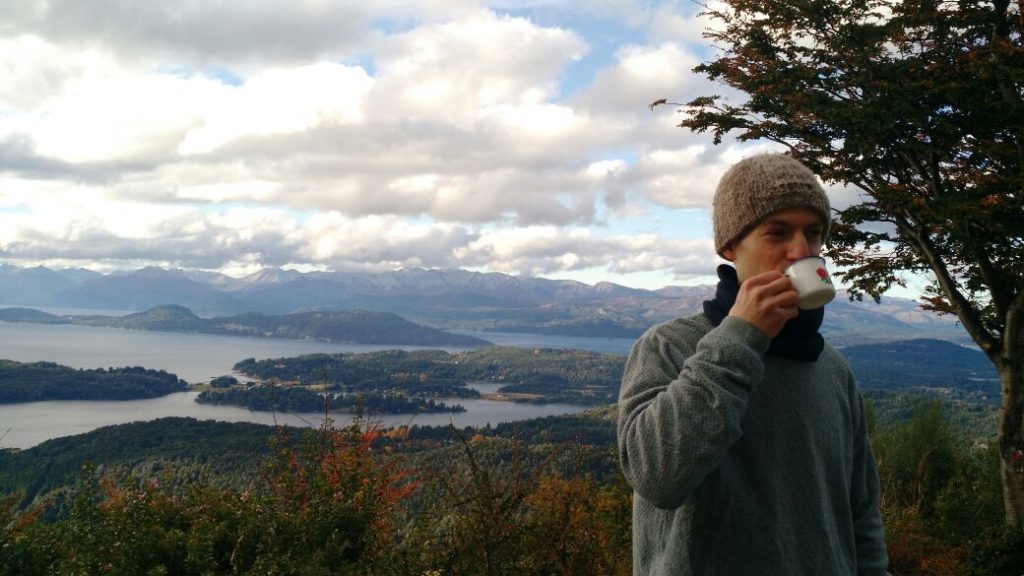
In April, me and Caoife left Melipüllü, a.k.a. Puerto Montt (I’d been there for about three months, helping the local language revitalization team) for Argentina. We took a bit of a break from language revitalization on the way, staying with a friend in Hornopiren (“oven-snow” in Spanish/Mapudungun), then making the spectacular journey to Futaleufu (“big river” in Mapudungun) by ferry/hitchhiking/very shaky bus. From Futaleufu, we tried to hitchhike to Trevelin (“three mills” in Welsh), though we ended up walking a lot of the way.
Once in Trevelin, we went to Ysgol y Cwm, one of the three bilingual (Welsh-Spanish) schools in Chubut/Y Wladfa, the part of Argentine Patagonia settled by the Welsh. We had a good chat with teachers and coordinators about different aspects of language revitalization and showed a few WAYK techniques using the first bit of the Quechua ride developed by Rachel Sprouse. In the evening we also went to one of the evening classes for Welsh, taught using the Ulpan method.
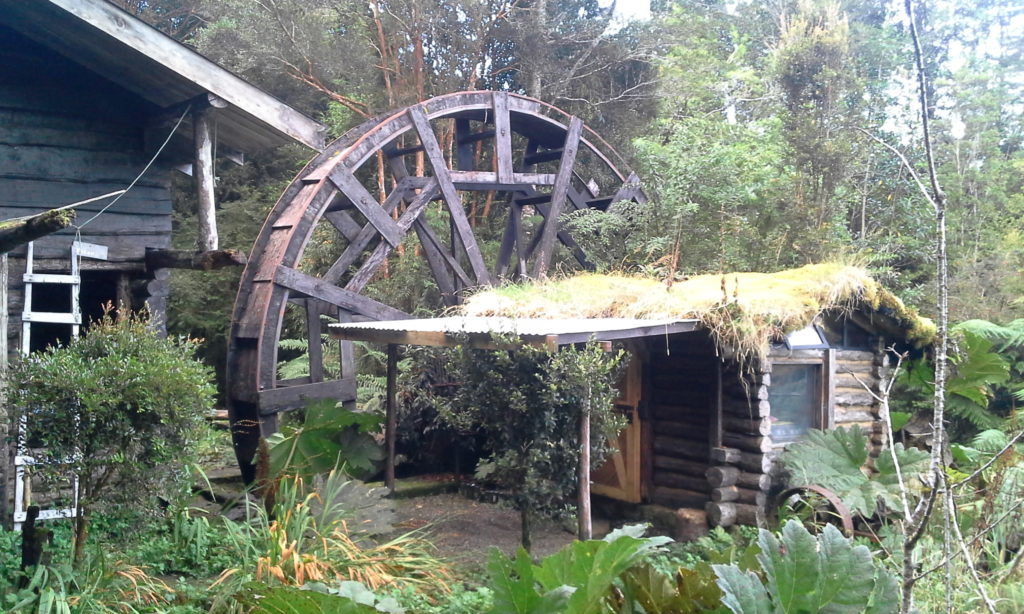
In Esquel, we met up with a linguist who has been carrying out documentation with speakers of Mapudungun in Chubut for several decades. Those recordings are on tape cassettes, so we talked about helping to digitalize them.
We arrived in Bariloche a week ago and first went to a couple of classes in Mapudungun to get a feel for the situation. The next day with the local language revitalization team we shared some WAYK techniques. We ran a small bucket brigade in order to show the possibility of learning in immersion from absolute zero even with a relatively large group. For this we used Scottish Gaelic as a demo language, working out three buckets to with an increasing level of grammatical complexity at each bucket (to kill the faires: it’s a potato > it’s a green potato > they’re green potatoes).
Then we ran the Set Up game in Spanish, our idea was that this would be a bridge between the bucket brigade (highly structured) and the hunts to follow (less structured); it was also a way to sandwich “theory” (what is a Set Up?) between more applied activities. It worked well to explain Set Up right after the bucket brigade so that people had the image of three green potatoes to link to the concept. After the set-up game we showed Set Up being applied in three demo hunts: first using a WAYK video in Spanish on Vimeo (the advantage of this modality being that we could stop the video and explain what was happening; also helped keep people’s attention), secondly by doing a live demo in Spanish between me and Caoife, and thirdly by doing a live demo in Mapudungun between me and a Mapudungun speaker.
Then we had a period of immersion in Mapudungun so that people could write down the “holes in their pockets.” Here there was a lot of Spanish being spoken, so we thought that next time we should create a more definite entry into the Mapudungun bubble. We planned to use these holes-in-the-pocket to illustrate swimlanes, but there was only time for people to put these holes-in-the-pocket in the first column of the swimlanes (we wanted to have people actually go through the swimlanes with one language piece, but instead I quickly explained the other columns).
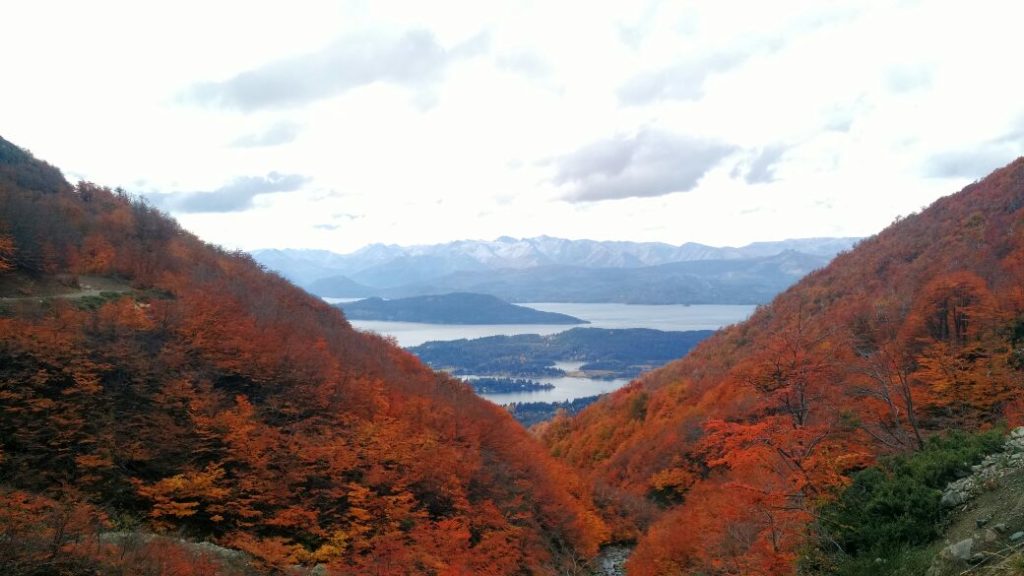
The friend we’ve been staying with in Bariloche happens to be one of the most dedicated language learners I’ve ever met and is now learning German (as well as English) so we’ve had a lot to share about “alternative” language learning methods. One tip from him this week has been the value of mixing different learning modes: for example, if you practice language on the bus every day (assuming there’s no one on the bus who speaks your target language), then listen to a song one day, use a language-learning app another day, read something another day, and so on.
Post authored by Robbie & Caoife.

